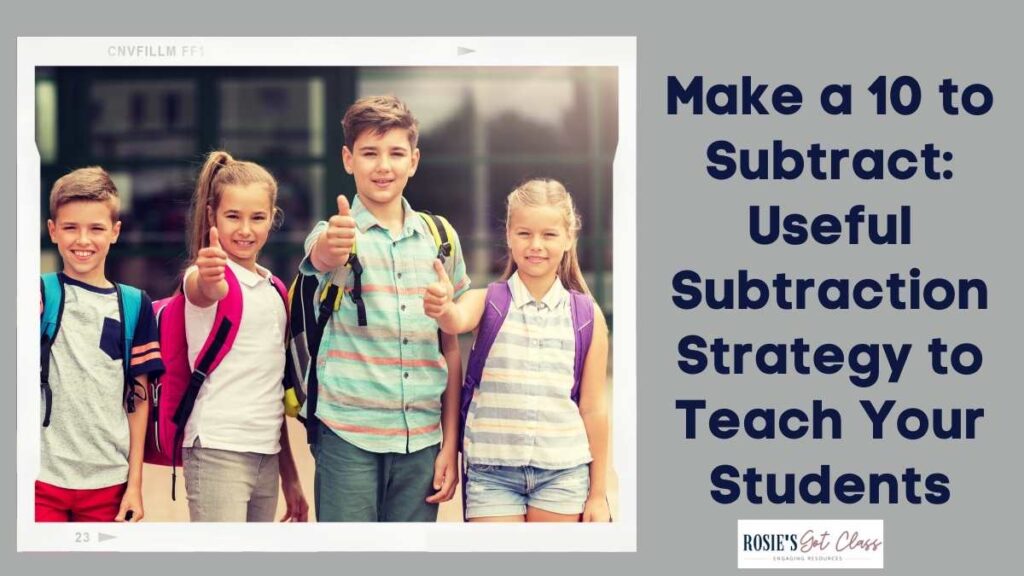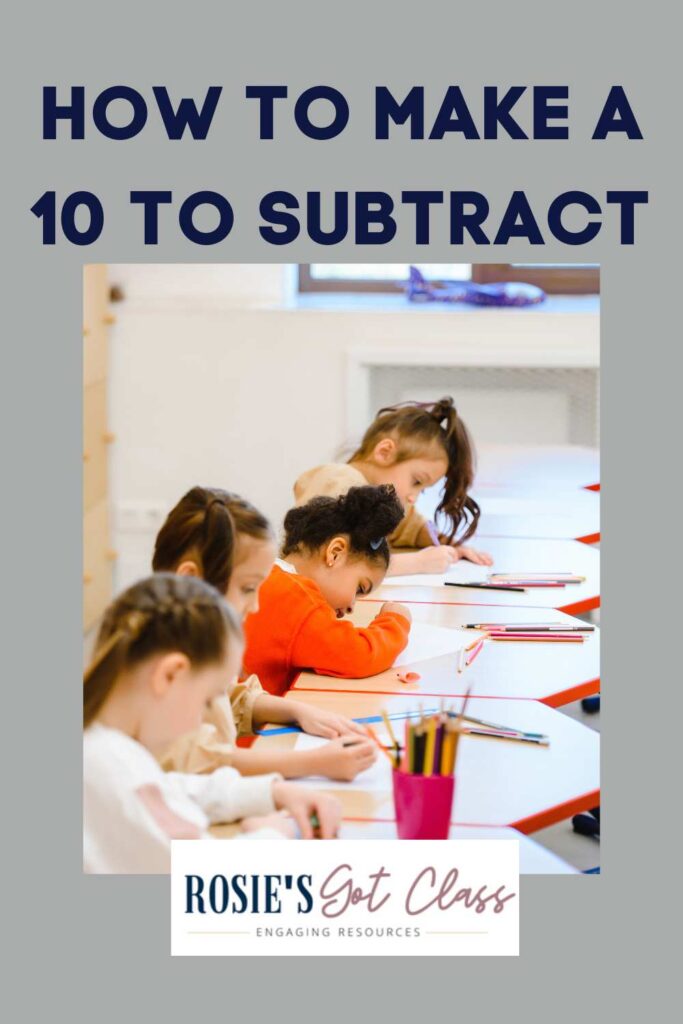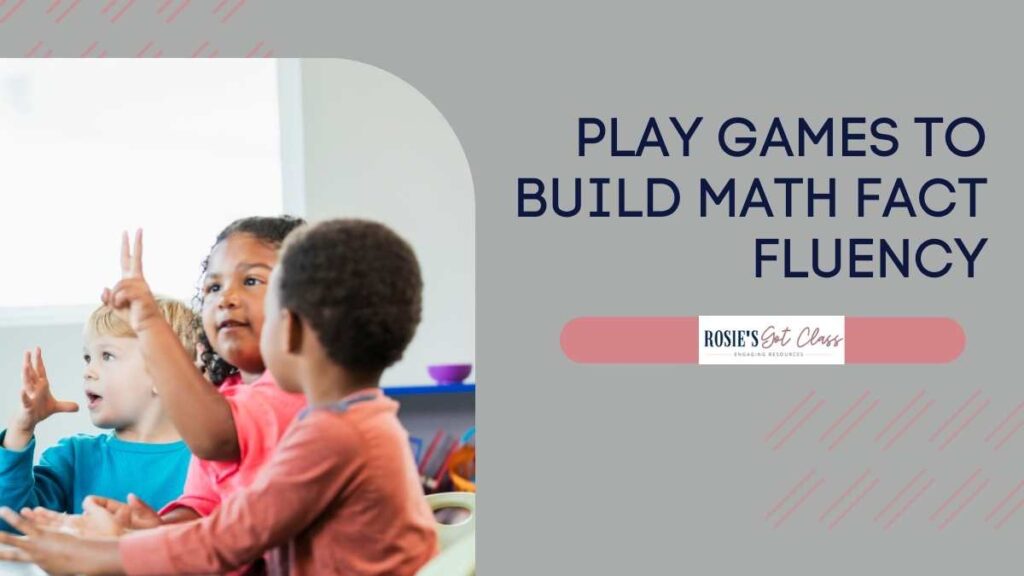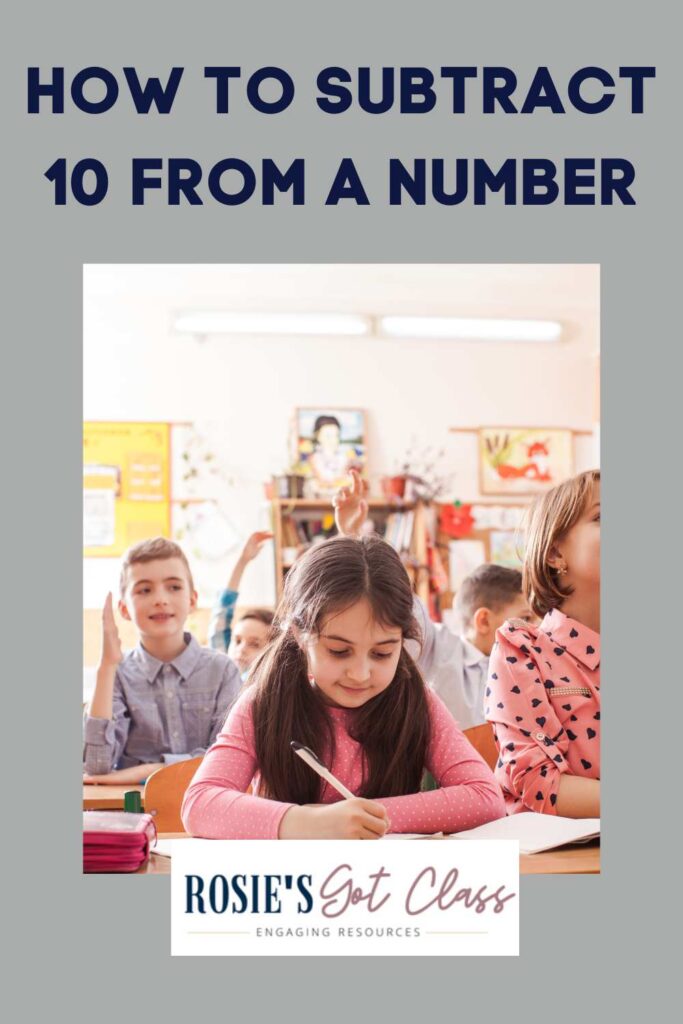
Make a 10 to Subtract: Useful Subtraction Strategy to Teach Your Students
Subtraction can be tricky for young children, but using the Make a 10 to Subtract strategy can make it easier while building number sense. This approach helps students break numbers apart in a way that simplifies subtraction and builds fact fluency. Let’s explore how this method works, why it’s beneficial, and how you can teach it effectively in your classroom.
Before we begin, let’s talk about an engaging way to practice subtraction and addition strategies. Your students will love the activity while they build math fact fluency. It is a great way for them to show you their understanding while being engaged in an exciting math activity. This classroom transformation is easy to use and makes math fun. Put your name and email in the boxes and look in your email for your zoo themed math activity.
How to Make a 10 to Subtract
The Make a 10 to Subtract strategy involves breaking apart the number being subtracted into two parts. They need to break the number into two parts so that one of the parts gets you to 10. Then you will subtract the remainder. By making a stop at 10, students simplify the subtraction process, making it easier to solve mentally. Let’s look at some examples:
Make a 10 to Subtract 15-7
- Start with 15 and break 7 into two parts: 5 and 2.
- Subtract 5 first to reach 10.
- Subtract the remaining 2.
- The answer is 8.
Make a 10 to Subtract 13-5
- Start with 13 and break 5 into 3 and 2.
- Subtract 3 first to reach 10.
- Subtract the remaining 2.
- The answer is 8.
How Can You Make a 10 to Subtract 16-8?
- Start with 16 and break 8 into 6 and 2.
- Subtract 6 first to reach 10.
- Subtract the remaining 2.
- The answer is 8.
Make a 10 to Subtract 16-9
- Start with 16 and break 9 into 6 and 3.
- Subtract 6 first to reach 10.
- Subtract the remaining 3.
- The answer is 7.
By breaking apart numbers to reach 10 first, students develop number flexibility. It is a helpful way to approach subtraction.

Teaching the Make a Ten to Subtract Strategy
To help students master this strategy, use a combination of hands-on activities and models.

1. Use Manipulatives and Ten Frames
Ten frames are a fantastic tool for helping students visualize subtraction. Give students counters and a ten-frame mat. Have them represent the starting number and then physically remove counters to demonstrate breaking apart numbers to make a 10 before completing the subtraction.
2. Use Drawings and Number Bonds
Encourage students to draw quick sketches or use number bonds to show how numbers are broken apart. For example, for 13-5, students can draw a number bond showing that 5 is split into 3 and 2. This visual representation makes it easier for them to see how making a 10 simplifies the process.

3. Write the Equations
Have students write out the equations to show their thinking. By explicitly writing the process, students develop a deeper understanding of why making a 10 is helpful.

4. Play Games to Build Math Fact Fluency
Make math fun by incorporating games that allow students to practice this strategy. Here are some engaging ideas:
- Spin and Play Subtraction – Students spin a number and practice the strategies to make a 10 to make an easier subtraction problem.
- Roll and Write – Students roll dice to choose a subtraction problem and then solve the equations. They can practice using make a 10 to subtract strategy.
- Card Games – Use this card game to help students use subtraction strategies to build math fact fluency.
- PowerPoint Spinning Wheels – Use these games to practice subtraction by making a 10.
- Color by Code – Help your students practice their subtraction skills with these fun color by code worksheets.

Build Number Sense and Flexibility
A key question to ask students is “Can you make a friendlier number to subtract?” This helps them recognize that breaking apart numbers strategically makes subtraction easier.
For example, when solving 13-5, break 5 into 3 and 2. Ask students “Why did we use 3 and 2 instead of 1 and 4?” This question encourages them to see using 10 simplifies the process. Understanding this strategy helps students develop strong number sense and mental math skills.

How to Subtract 10 from a Number
Another essential skill related to making a 10 is understanding how to subtract 10 from any number quickly. Students can use patterns to recognize that subtracting 10 means reducing the tens place by 1 while keeping the ones place the same. For example:
- 14 – 10 = 4
- 17 – 10 = 7
- 12 – 10 = 2
In conclusion, using the Make a 10 to Subtract strategy is a powerful way to help students build confidence in subtraction. By incorporating hands-on activities, models, and engaging games, you can make this strategy accessible and fun for your students. Encourage them to think flexibly about numbers and develop strong mental math skills that will support them in more advanced math concepts. Try this approach in your classroom and watch your students gain a deeper understanding of subtraction while strengthening their overall number sense!
Here are some other articles you might find helpful.


